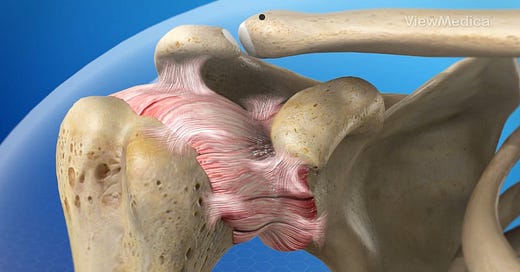When It’s More Than Just a Frozen Shoulder: A Case Study Linking Adhesive Capsulitis and Lyme Disease
By: Kristy Weems, PT
In December 2024, a patient presented to my clinic with classic signs of adhesive capsulitis (AC), also known as frozen shoulder. She had a profound loss of shoulder range of motion in a capsular pattern, significant pain, and stiffness. We began traditional physical therapy interventions—joint mobilizations, stretching, and neuromuscular re-education—but her progress was stagnant. Something wasn’t adding up.
From the first session, I sensed this wasn’t a typical case of adhesive capsulitis. The tissue quality felt different under my hands—more reactive, more inflamed. Her scapula refused to move despite neuromuscular cueing and facilitation. There was a sense of something deeper and more systemic at play.
In February 2025, after failing to improve with conservative care, she underwent a manipulation under anesthesia (MUA). She returned to physical therapy the very next day, but surprisingly, her range of motion remained severely limited. Pain was a 10/10, and her scapulothoracic mobility remained virtually nonexistent.
Trusting my clinical instincts, I contacted her orthopedic surgeon—a trusted colleague—and voiced a concern that had been lingering in my mind: could this be Lyme disease? He agreed to test her, and the results were telling. She tested positive for 5 IgM bands on the Western Blot—confirming a diagnosis of Lyme disease.
Lyme disease, caused by the Borrelia burgdorferi spirochete and transmitted through the bite of infected blacklegged ticks, can present with a wide array of musculoskeletal symptoms—some of which closely mimic orthopedic conditions like AC. This patient was prescribed 30 days of doxycycline and referred to a shoulder orthopedic specialist.
That specialist ultimately performed a second, more extensive procedure: another MUA combined with arthroscopy. During the surgery, the team debrided significant scar tissue, treated active tendinitis, and released a tendon that had become entrapped—likely causing neural irritation and guarding.
The very next day, she returned to my clinic. To my amazement, she achieved 175 degrees of shoulder flexion. Her pain had diminished, and her scapula began to move fluidly for the first time in months. Today, she continues her rehab journey, diligently performing her home exercise program—even while on a cruise!
Clinical Reflection:
This case highlights a critical lesson: when a shoulder doesn’t feel like “just a frozen shoulder,” trust your hands and your gut. Adhesive capsulitis typically responds—albeit slowly—to well-dosed physical therapy and/or surgical interventions. When it doesn’t, dig deeper. Lyme disease, though not common in all regions, can cause profound joint inflammation and fibrotic changes, which may derail standard orthopedic recovery pathways.
Takeaway for Clinicians:
When tissue response seems atypical, and when standard protocols fail, advocate for further investigation. Your clinical intuition is a powerful tool. In this case, uncovering an infectious etiology changed the entire course of treatment—and the outcome.



